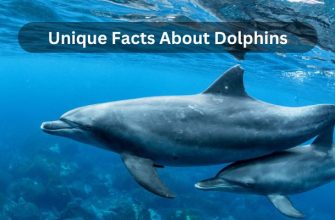Dolphins have captivated human imagination for centuries. With their high intelligence, playful behavior, and complex communication, these marine mammals are more than just ocean entertainers. In this article, we dive deep into the facts of dolphins, exploring everything from their social habits and cognitive abilities to some lesser-known and even dark facts of dolphins. This detailed guide includes fun trivia, behavioral insights, and ecological importance—perfect for enthusiasts and researchers alike.
Table of Contents
1. Dolphins Are Not Fish—They’re Mammals
One of the most basic facts about dolphins is that they are mammals, not fish. Like humans, they breathe air through lungs, give birth to live young, and nurse them with milk. Despite living their whole lives in water, dolphins must surface regularly to breathe, using their blowholes.

2. Where Do Dolphins Live?
Dolphins are found in oceans and rivers around the world. While most live in warm saltwater seas, several species, like the Amazon River dolphin (pink dolphin), thrive in freshwater.
- Coastal dolphins prefer shallow waters near shorelines.
- Oceanic dolphins inhabit the deep sea and travel in large pods.
- River dolphins live in South America and Asia.
This global distribution shows the species’ impressive adaptability.
3. Echolocation: Dolphins’ Natural Sonar
One of the special facts of dolphins is their advanced echolocation system. Dolphins emit high-frequency clicks and listen to the echo that bounces back from objects. This allows them to:
- Navigate murky waters
- Detect fish
- Communicate with pod members
- Avoid predators
Echolocation is also used for spatial awareness and even hunting in complete darkness.

4. A Pod of Dolphins Is a Tight-Knit Community
A group of dolphins is called a pod, and these groups can range from 5 to over 100 individuals. Within these pods, dolphins form social bonds, help injured members, and work together to hunt fish. Some dolphins even exhibit cultural behavior, passing down hunting techniques.
5. Fun Facts of Dolphins That Will Surprise You
Here are five fun dolphin facts:
- Dolphins have names—each uses a unique whistle to identify itself.
- They can stay awake for 15 days straight using unihemispheric sleep.
- Dolphins are known to play with other species like whales and sea turtles.
- They love surfing and bow-riding waves created by boats.
- Bottlenose dolphins can recognize themselves in mirrors.

6. Communication Is Incredibly Advanced
Dolphins communicate through a variety of methods: clicks, whistles, body language, and even facial expressions. Their complex vocalizations serve functions similar to human language. Scientists have even identified dolphin dialects that vary by region and pod.
7. Not All Dolphin Facts Are Cute – Some Are Quite Dark
Here are some dark facts of dolphins that aren’t commonly discussed:
- Dolphins have been known to bully or attack porpoises.
- In captivity, dolphins often suffer from stress and depression.
- Some male dolphins form aggressive alliances to control females.
- Naval militaries have trained dolphins for combat roles.
These realities serve as a reminder that dolphins, like humans, are emotionally complex and not always harmless.
8. Species Spotlight: The Pink Dolphin
The Amazon River dolphin, also known as the pink dolphin, is an elusive freshwater species. These dolphins can turn a rosy pink due to blood vessel expansion, especially when excited.
As of recent studies, it’s estimated that only around 2,000 pink dolphins are left in certain regions, with populations declining due to pollution and dam construction.
9. Are Dolphins Dangerous?
While dolphins are generally friendly, they can be dangerous in rare cases. Wild dolphins have been known to bite, headbutt, or become aggressive when threatened or provoked. Their strength and intelligence make them capable of both cooperative and aggressive behaviors.
10. Dolphins Play an Essential Role in Marine Ecosystems
By preying on fish and squid, dolphins help maintain healthy populations of marine life. Their presence also serves as an indicator of ocean health. Protecting dolphins means protecting a balanced ocean ecosystem.
Conclusion: Dolphins Are More Than Just Playful Swimmers
The facts of dolphins reveal a species rich in intelligence, emotional depth, and behavioral complexity. From their playful leaps to their military-grade sonar systems, dolphins continue to amaze scientists and nature lovers alike. By understanding both the fun and dark facts of dolphins, we get a fuller picture of this fascinating marine species. Whether you’re a student, researcher, or just curious, there’s always something more to discover about dolphins.
FAQs About Dolphin Behavior and Biology
1. Where do dolphins live?
Dolphins live in oceans and rivers across the globe. Coastal species stick to shallow, warm waters, while others roam the open sea. Some rare species, like pink river dolphins, are found in the Amazon and Ganges.
2. What are 5 facts about dolphins?
- Dolphins are mammals, not fish.
- They use echolocation to “see” underwater.
- Some dolphins live in freshwater rivers.
- They have names and complex social behaviors.
- A group of dolphins is called a pod.
3. Are dolphins dangerous?
While dolphins are usually friendly, they can be territorial or aggressive, especially in captivity or when threatened in the wild. They’re powerful creatures and should be respected.
4. What is a group of dolphins called?
A group of dolphins is called a pod. Larger gatherings for feeding or migration may be called a superpod, involving hundreds of dolphins.
5. How many pink dolphins are left in the world?
Exact numbers vary, but Amazon pink dolphin populations are estimated to be in the low thousands, and they are currently classified as endangered due to environmental threats.









